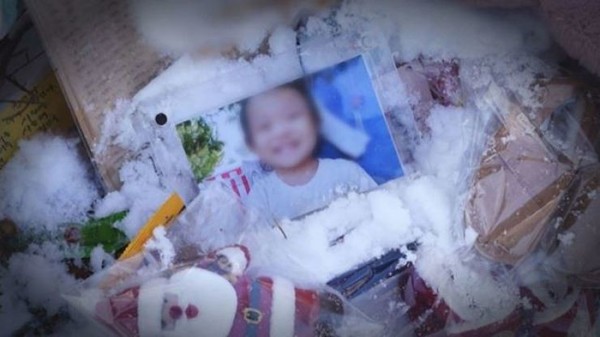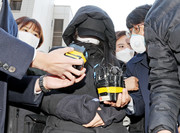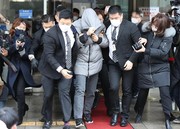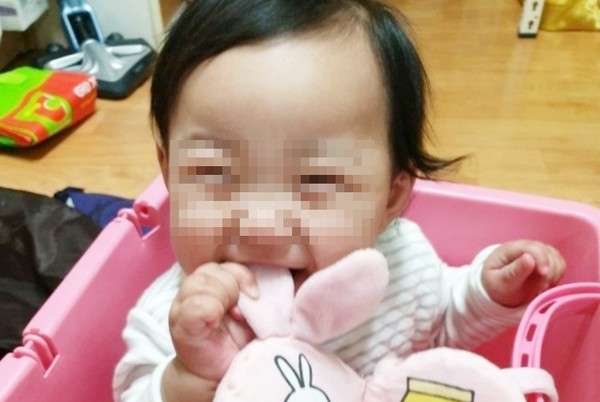A 16-month-old girl named Jeong-in died on October 13th last year, only 271 days after she was adopted. It was a clear incident of child abuse. An investigative report aired by SBS on January 2nd reported the death of the toddler and has caused public outrage. Many people were angry and felt sorry because this tragic incident was due to the related agencies’ failures to respond to repeated reports of suspected maltreatment. Sympathizing with the pain of the toddler, we should think about how to prevent child abuse.

What Happened to the Toddler during those 271 Days?
Outline of the Event
Born on June 10th, 2019, Jeong-in was soon given up by her birth mother to a consignment agency designated by the adoption agency. In July 2019, when she was two months old, Jeong-in was adopted. Adoptive mother Jang, who studied in the U.S, and adoptive father Ahn, had both volunteered with adoption agencies. Jang had shown her desire to adopt a child. However, Jeong-in, in the hands of her adoptive parents died suddenly in October last year, and it was Jang and Ahn who drove the baby to death. Abuse had been committed for a long time as her body on the day of her death showed. Her body was bruised, her organs were severely damaged, and many bones were fractured. "Everyone knew it was abuse and murder. Watching the couple grieving, there were some staff who thought of them as devil,” the medical staff said. The prosecutors indicted the adoptive mother for involuntary manslaughter by child abuse in November. But as calls to change the charge to murder increased, the prosecution applied for the change in the first trial on Jan 13th, and the court also approved the application on the same day. Meanwhile, the adoptive mother continues to deny the allegations, claiming that "the accident was caused by an accidental drop while holding and waving the baby in anger since she was not eating."
Three Missing Opportunities
There were three reports of suspected child abuse during the 271 days since the child had been adopted. Two of them were made by those responsible for reporting child abuse. To prevent child abuse, the government requires teachers or medical staff who encounter children or workers at child welfare facilities to report child abuse. When a report is received, the Child Protection Agency (CPA) in the jurisdiction is dispatched to the site or asked the police to investigate. In May, workers at a day care center made the first report after they found bruises on Jeong-in’s body. The CPA asked the police to investigate the next day, and the police started an investigation. However, the police closed the investigation on June 16th saying they found no evidence to prove abuse, and the adoptive mother was acquitted. The risk assessment of child abuse conducted by the CPA at that time was also incompetent. Some of the evaluation items were questions that the young baby could not answer.
The adoptive mother Jang used to leave her child at home alone for hours, calling it “sleep education.” The second report was made by the adoptive parent’s acquaintance who saw Jeong-in left alone inside a parked car in June. On the day of the report, an Anti-abuse Police Officer (APO) and two staff from the CPA conducted a joint investigation. However, the police spent 14 days trying to locate Jang’s car and visited the site a month after the report. The CCTV footage had already been erased, and the second chance for the baby to be rescued disappeared. In September, Jeong-in's daycare center workers found that her physical condition had become severely weak and took her to the pediatrician. The pediatrician immediately reported suspected child abuse. However, the police handed over the responsibility to the CPA, by saying that the parents strongly opposed Jeong-in’s separation from them and that no evidence had been found. The CPA also no longer asked the police to investigate as another hospital diagnosed the toddler's mouth wound as slight stomatitis, which Jeong-in’s pediatrician considered abuse. All three reports were ignored.


Why Didn't the Police Handle It Properly?
The police are facing fierce criticism for their failure to properly respond to the three reports of suspected child abuse. After the airing of the investigative report by SBS, public outrage is snowballing over the brutal violence by the adoptive parents and the police’s failure to issue a proper response. A petition was submitted to the Blue House bulletin board calling for the dismissal of the head of the Yangcheon Police Station and the police officers in charge on Jan 4th. It garnered more than 200,000 signatures in a day, which merits an official response from the Blue House. As the criticism continued, National Police Agency Commissioner General Kim Chang-yong apologized on Jan 20th, saying, “I feel heavy responsibility as the head of the police for failing to protect the toddler from abuse.”
Along with the criticism, problems of the Anti-abuse Police Officer (APO) have also risen to the surface. The National Police Agency (NPA) introduced the APO to protect children, women, seniors, etc. from abuse in 2016. According to the data from the NPA, there are currently 669 APOs nationwide and an average of 2 to 3 people per police station are deployed. However, it is said that many police officers avoid taking the APO. That is because in cases of child abuse, victims often cannot speak up themselves and it is difficult to find clear evidence of the assault. In addition, APO is known to have a relatively high work burden as it deals with many other abuse cases such as those against the elderly and the disabled, or domestic violence, and conflicts with offenders are also frequent during the investigation. As a result, the APOs frequently leave their position. According to the Incheon Metropolitan Police Agency, the number of the APO in Incheon is only 30 as of last year, and of that only two have worked for more than two years.
Reality of Child Abuse
The total number of child abuse reports and applications compiled annually by Statistics Korea and the Ministry of Health and Welfare more than doubled in four years, from 19,214 in 2015, to 41,389 in 2019. But Chung Ick-joong, a professor of social welfare at Ewha Womans University, explained that “As the perception of abuse improved, the tendency to report acts that were yet not considered abuse also has increased.” However, the biggest problem is the lack of a system to prevent and properly deal with child abuse. First, the immediate separation system is insufficient. It is a system that separates a child from a parent immediately after two reports of suspected child abuse. According to the data from the National Center for the Rights of the Child, of the 24,604 cases of child abuse in 2018, only 3,287 cases, or 13.4 percent, were resulted in the child being separated from the abuser. Most children return to their abusive families. “It is, of course, important for children to grow up in their own homes but the act of returning to their families should be taken after the risk factor of domestic abuse is eliminated. The problem in Korea is that the return to homes is carried out without such procedures.”, pointed out Park Myung-sook, a professor of social welfare at Sangji University. Returning to the abusive family without proper measures often leads to the recurrence of abuse. The number of re-abuses more than doubled from 503 in 2010 to 2,543 in 2018. The ratio of re-abuses to total child abuse cases also increased from 9.7 percent in 2017 to 10.3 percent in 2018.
There were voices calling for tougher punishment for child abuse offenders. However, many experts pointed out that tougher punishment is not the answer. “Abusive parents don’t think they must not do so because the punishment is heavy,” said Professor Lee Yung-hyeok of the Police Science Department of Konkuk University. “When the sentence is heavy, the abusers do their best to deny the charge, and the prosecution’s burden to prove the case increases.”, said Kim Ye-won, a lawyer. The experts stressed improvement in the system. The Child Protection Agency provides social services such as education and medical care aimed at overcoming the aftereffects of abuse of affected children and edifying abusers. However, most people related to abuse cases are not properly provided with these services. As of 2019, 65% of all children and 70% of abusive actors were given “general counseling.” The proportion of actual services such as medical support and psychotherapy barely exceeded 10%. "General counseling includes telephone counseling, which is not very effective. In addition, support services are essential for the brothers and sisters of abused children who were exposed to the abuse, but such services are not considered at all in Korea," said professor Park. She also pointed out that the edification of abusers has no legal basis to enforce their education, so most of them do not participate in the education services.
How Do We Solve This?
Positioning Experts Who Can Be Held Accountable to the End
Many experts emphasized securing public experts that can be responsible until the end. The CPA and APO are currently in charge of child abuse cases. But the CPA has no public authority because it is a private institution, and APO had difficulty handling the case until the end as the the person in charge kept changing. In December last year, Yang Seong-il, the vice health minister, promised to deploy public servants in charge of child protection nationwide. Proposing a revision to the Act on Special Cases concerning the Punishment, etc. of Child Abuse Crimes, the government has prepared a clause that makes the police and public servants investigate the abuse separate place from the accused child abusers. This is a measure that strengthens public responsibility for child abuse. Meanwhile, many people demanded the solution to the problem of the person in charge of a case continually changing. “The investigators, dedicated public servants, and police officers are all in rotation. We need a specialist who can handle each case to the end.", said Kong Hye-jeong, head of the Korea Child Abuse Prevention Association. “Counselors at CPA take many cases every day, making it difficult to concentrate on each case and they have a high turnover rate due to poor working conditions. The treatment of counselors needs to be improved.”, said Ryu Kyung-hee, head of the Good Neighbors North Chungcheong Province.
b. Establishment of Immediate Separation System and Protection Facilities
Many people felt that if Jeong-in had been separated from her adoptive parents at the time of the abuse report, it would not have ended in tragedy. On Jan 5th, the Blue House spokesman Kang Min-seok said, "The government will implement an immediate separation system from March to strongly respond to child abuse." The police also decided to immediately separate children from their abusers after receiving more than two suspected abuse reports. However, some experts are concerned about this. Professor Cheong Ick-joong pointed out that “We need to consider the child's emotional scarring by separating them from their parents, and there are not enough places for the child to be placed." There are many voices that the shelter should be increased first. The Ministry of Health and Welfare and local governments currently operate 76 shelters nationwide. However, only about 500 children can be accommodated because only about five to seven can be housed per shelter. In addition, since the number of shelters varies by each local government, public servants at local governments with fewer shelters must look for facilities where children can stay. This shows that measures to expand shelters need to be preceded before the introduction of the immediate separation system.
The toddler's body and facial expression clearly showed signs of abuse. It is not easy to imagine how painful her life must have been. However, this incident should not be remembered only as a tragic accident. Recognizing the dangers of child abuse and considering precautions against it is the most important task for us. It should also be remembered that this accident is not an adoption issue but a child abuse issue. We should be careful not to make a social stigma against adoptive families, which could hinder adoption culture. Above all, prejudice is the most dangerous. The workers at Jeong-in’s day care center said the police seemed to believe her adoptive parents more than them just because the couple were thought to be good people. It is said that child abuse offenders have nothing in common. In other words, anyone could be suspected of abusing a child. With better awareness and measures, there should be no more victims like Jeong-in.


